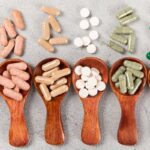Babies Without Anus, Hands, or Feet Found Near North Korea’s Nuclear Test Site: What’s Happening?
Daniel Kim Views

A North Korean defector has revealed that babies born near North Korea’s nuclear test site suffer from a condition called “ghost disease,” characterized by missing fingers, toes, and anuses.
According to The Sun, Lee Young Ran, who defected from North Korea in 2015, spoke about her experiences living near the Punggye-ri nuclear test site in Gilju County, North Hamgyong Province.
In North Korea, babies born without fingers, toes, or anuses are said to have “ghost disease.” Lee stated, “Doctors near the nuclear test site are unable to diagnose this mysterious illness and feel helpless. It wouldn’t be an exaggeration to say that having a child without an anus, fingers, or toes became the norm in Gilju County.”
Lee recalled the third underground nuclear test in North Korea in 2013, saying, “The wall clock fell, and the light bulbs shook. Thinking it was an earthquake, we ran outside. So did our neighbors.” It was only after hearing the announcement of a successful nuclear test on the broadcast that the residents realized that the Punggye-ri military control zone near their homes was a nuclear test site.
While residents celebrated the news of the successful test by dancing in the streets, they soon became the first victims of “ghost disease.”
Lee’s son’s health deteriorated starting in October, the year after the nuclear test, and he was diagnosed with holes in his lungs measuring 1.5 cm and 2.7 cm. More and more residents began visiting hospitals, and most of those diagnosed with tuberculosis ended up dying, she said.
Before fleeing to China in February 2015, Lee spent all her life savings on medicine for her son. After crossing into South Korea, she sent money to her son through brokers, but she later received the news that her son had died in 2018.
She was also found to have been heavily exposed to radiation and had low white blood cell counts during a medical examination in South Korea in 2016. She said, “I had pain all over my body and could barely walk. I was hospitalized six times a year due to headaches, but the cause could not be determined. Many people in Punggye-ri have similar symptoms.”
Nuclear expert Professor Moon Joo Hyun of Dankook University’s Department of Energy Engineering told The Sun that radiation appears to be the cause of the disease, known in North Korea as “ghost disease.” He explained, “Radioactive substances can seep into the soil or groundwater through cracks and fissures caused by explosions. The nuclear test site is located in the Changheung River basin, where water flows into the Namdaecheon, a major water source for Gilju County.”
Earlier, the North Korean human rights group Transitional Justice Working Group (TJWG) mentioned the possibility of radiation exposure among residents near the nuclear test site in a report titled “Contamination of Groundwater by Radioactive Materials from North Korea’s Punggye-ri Nuclear Test Site and Its Impact,” released in February last year.















Most Commented